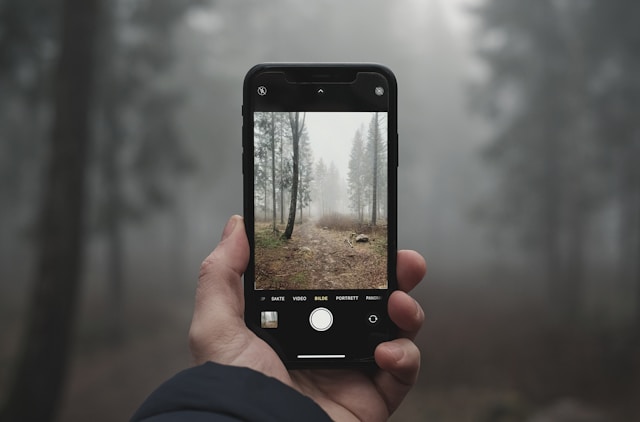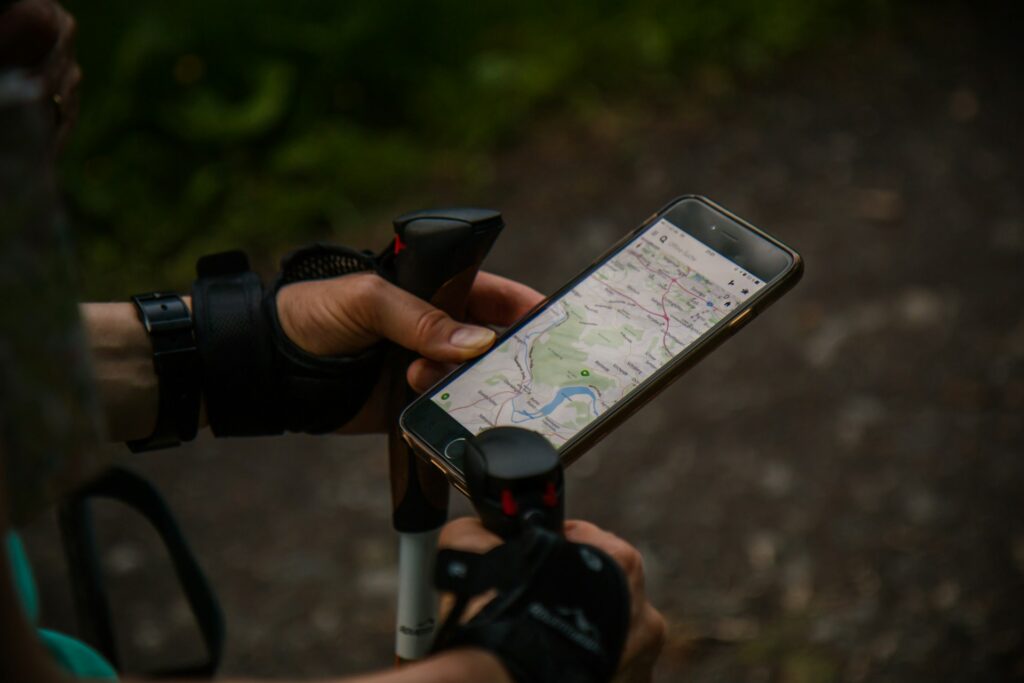One of the things that keep people away from venturing into the wild is the fear of getting lost. Although GPS devices have been around for quiet a while, their hefty price might be prohibitive for many, especially casual hikers or those trying to get started. However, smart phones have been a game changer over the past decade. You can install one of the many trail navigation apps and you’re good to go. But, the phone battery could die mid-hike and you end up the target of a rescue mission. To avoid such an unpleasant ending to your outdoor adventures, I wrote this article to share my tips on how to conserve phone batter life while hiking!
- Tips To Save Phone Battery Life In The Backcountry
- 1. Use airplane mode
- 2. Download offline content
- 3. Force exit all unused apps
- 4. Manage data usage
- 5. Optimize your navigation app
- 6. Turn off notifications
- 7. Utilize battery saver mode
- 8. Control your screen brightness
- 9. Minimize screen timeout
- 10. Update your phone
- 11. Adjust for extreme temperatures
- 12. Consider powering off your phone
- 13. Carry an external battery pack
- Final Thoughts On How to conserve phone battery life while hiking
Tips To Save Phone Battery Life In The Backcountry
Your phone is not only a tool that helps you navigate the trail. But rather a single lightweight device that could replace a dedicated GPS unit, a DSLR or mirrorless camera, and sources of entertainment such as bulky books or an iPod. Let’s make sure you’re well prepared to conserve phone battery life while hiking with a few tips and tricks.
1. Use airplane mode
Your phone continuously tries to establish a network connection. But, when you’re in an area with poor or no cell coverage, this will only drain your phone’s battery life. Therefore, it’s best to switch on airplane mode as this will make a huge difference toward conserving battery life while hiking.
It’s important to note that airplane mode is not going to prevent your phone from using the GPS. The latter relies on satellite connectivity, which is different from the cell network. That’s good news because you’ll still be able to navigate your way on the trail while you save battery life.
2. Download offline content
Since we’ve agreed the first step to conserve phone battery life while hiking is to switch on airplane mode, that means you can no longer use the internet. Therefore, it’s important to download any content you might need BEFORE you leave the house.
The most important content you’ll want to download for offline use is the map of your trail. Many navigation apps offer you this capability with their paid versions. A couple of examples I could recommend are Gaia GPS and AllTrails. If you ask me, it’s definitely worth money, but I can’t speak for everyone’s budget. But, look at it this way:
- It’s an adequate replacement for a dedicated GPS unit which costs hundreds of dollars.
- You’re paying an insurance premium that will significantly increase your odds of finding your way back home.
Tip: If you prefer not to pay for a navigation app subscription, you can often find a GPX file of the trail you’re planning to hike. Download it to your phone, and then use an app such as OsmAnd to open it on your phone and use it for navigation (without internet).
3. Force exit all unused apps
Another tip to save phone battery life in the backcountry is to make sure you force exit any apps you’re not using. This will ensure they’re not trying to refresh content or using location services in the background, which as you might guess, will drain your battery unnecessarily.
4. Manage data usage
As explained in the previous tip, it’s best to force exit any app you’re not actively using. However, if you end up opening one to check something real quick, or maybe you tap the wrong icon, the app will start using your data again. To avoid that, prevent any apps from performing any background activity by going to the settings and switching off the Background App Refresh option.
5. Optimize your navigation app
Limiting the battery usage of apps in the background is important, but the same can be said about the navigation app you’re using. Depending on the application, you might have the option to turn off any visual or vibrating notifications. Similarly, you could configure it to locate your position through GPS only when you manually trigger it. In this case, you’d only update your location on the map when the trail isn’t too obvious, which helps preserve battery life while hiking.
6. Turn off notifications
In addition to mostly being a distraction, push notifications will also drain your battery. Make sure you turn them off completely while you’re out in the backcountry.
7. Utilize battery saver mode
One of the greatest features introduced over the past few years is the low power mode on your phone. It optimizes the performance of your phone to minimize battery consumption, stops any unnecessary animations, and reduces screen brightness. In addition, it prevents apps from refreshing their content in the background.

8. Control your screen brightness
Screen brightness is one of the most impactful factors when it comes to how long your battery is going to last on a single charge. I think it goes without saying that the dimmer your screen, the less battery it’s going to consume. Take this further by switching on dark mode and use a pure black background.
9. Minimize screen timeout
Don’t stick to the default duration of time it takes your phone to turn off the screen when it’s not being used. Instead, make sure you configure it to the smallest value allowed.
10. Update your phone
Newer versions of your phone’s operating system often bring optimizations that makes it more efficient in consuming battery life. Similarly, those updates might introduce new features that give you better control over saving battery life. Therefore, make sure you keep your phone up-to-date with the latest OS release.
11. Adjust for extreme temperatures
If you’ve been hiking in extreme temperatures before, then you probably know how fast such climates can drain your battery. It gets worse in extremely hot weather as this can even damage your phone permanently. So how do you conserve your phone’s battery when hiking in such weathers?
- When it’s too cold: store your phone in contact with your body, not in your backpack or an exterior pocket. Your body heat will provide it with the warmth it needs. Also, if you’re camping overnight, stash your phone in your sleeping bag.
- When it’s too hot: keep your phone away from direct sunlight. Preferably store it inside your backpack wrapped inside a piece of clothing. This should help insulate your phone from the heat.
12. Consider powering off your phone
If you won’t be needing your phone for several hours, consider powering it off to conserve battery life. However, if you’re going to be checking your phone relatively often, then it’s more efficient to keep it powered on. Only power it off overnight, or for long stretches of time (3+ hours).
13. Carry an external battery pack
I almost never go hiking without packing a power bank. Since I rely on my phone to find my way back home, I minimize the chance of it running out of juice with all the tips I mentioned so far. However, that does not mean I should not have a plan-B just in case I do run out of battery. If and when that happens, I’ll be glad I threw that external battery pack into my backpack!

Final Thoughts On How to conserve phone battery life while hiking
Your phone is an excellent multi-purposed tool that can prove useful in the wild. Most importantly, it’s a great navigation tool and I encourage you to rely on it in the backcountry. However, electronic devices fail. It’s not a matter of if, but rather when. It can also fall and break, or maybe find its way into a creek and get damaged. When any of those unfortunate events happen, you better be prepared with a compass, a physical map and the skills to use them!
I hope you find those tips useful in helping you conserve phone battery life while hiking. Make sure you share any other tips I might’ve missed in the comments below!
